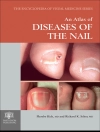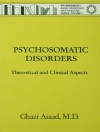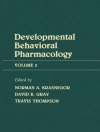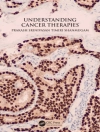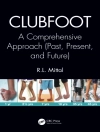The 3rd edition of this text entails a comprehensive review of endometrial pathophysiology, including the recognition of physiologic conditions (i.e. normal phases and pregnancy), as well as the accurate interpretation of pathologic entities (i.e. polyps, endometritis, gestational trophoblastic diseases, endometrial hyperplasia, carcinoma, etc). The book will maintain a compact size with numerous illustrations and tables. Although, in its essence, the table of contents remains unaltered from the previous edition, we intend to incorporate significant updates related to the expansion of our knowledge of old and newer entities, use of immunohistochemical and molecular ancillary techniques to assist in the correct diagnosis, as well as two new chapters – one with recommendations/suggestions of appropriate terminology for a pathology report (sign out templates) and another one focusing on specific pitfalls/mimickers/confounding factors in the diagnosis of endometrial samples (surface metaplasias, cytoplasmic changes, endocervical contaminants). The complicated subject of hyperplasia and cancer precursors will include expanded commentary on the application of endometrial intraepithelial neoplasia (EIN) and how it relates to the traditional classification of endometrial hyperplasia. Additionally, a substantial number of new, all color images, some of which will be available in electronic format, will aid readers to fully understand and confidently classify such complex specimens.
This text will continue to serve as a useful resource not only for pathologists in training and practicing pathologists, but also to experienced physicians, other health care providers and researchers dealing with, and interested in endometrial pathology. At the end of each chapter, a comprehensive summary – tables with key diagnostic bullets – will provide an additional tool for the readers interested in a quick review of the chapter’s information. This text will remain concise yet a comprehensive reference that will help pathologists use the most updated terminology, recognize potential pitfalls in the diagnosis of endometrial biopsies/curettages, as well as apply the most current tools in immunohistochemistry and molecular ancillary techniques available in the field at the moment.
‘…extremely useful for the practicing pathologist because it outlines criteria for diagnosis, helps in solving diagnostic dilemmas, and clarifies controversial issues.’ Modern Pathology
İçerik tablosu
Introduction.- The Normal Endometrium.- Pregnancy, Abortion, and Ectopic Pregnancy.- Gestational Trophoblastic Disease.- Abnormal Uterine Bleeding: Non-Structural Causes.- Effects of Hormones.- Endometritis.- Polyps.- Precursors of Endometrial Carcinoma.- Endometrial Carcinoma.- Mesenchymal Tumors and Other Rare Neoplasms.- Methods of Endometrial Evaluation.
Yazar hakkında
Tricia A. Murdock, MD
The Johns Hopkins Hospital
Baltimore, MD, USA
Emanuela F.T. Veras, MD
The Johns Hopkins Hospital
Baltimore, MD, USA
Robert J. Kurman, MD
The Johns Hopkins Hospital
Baltimore, MD, USA
Michael T. Mazur, MD
SUNY Upstate Medical University
Syracuse, NY, USA



